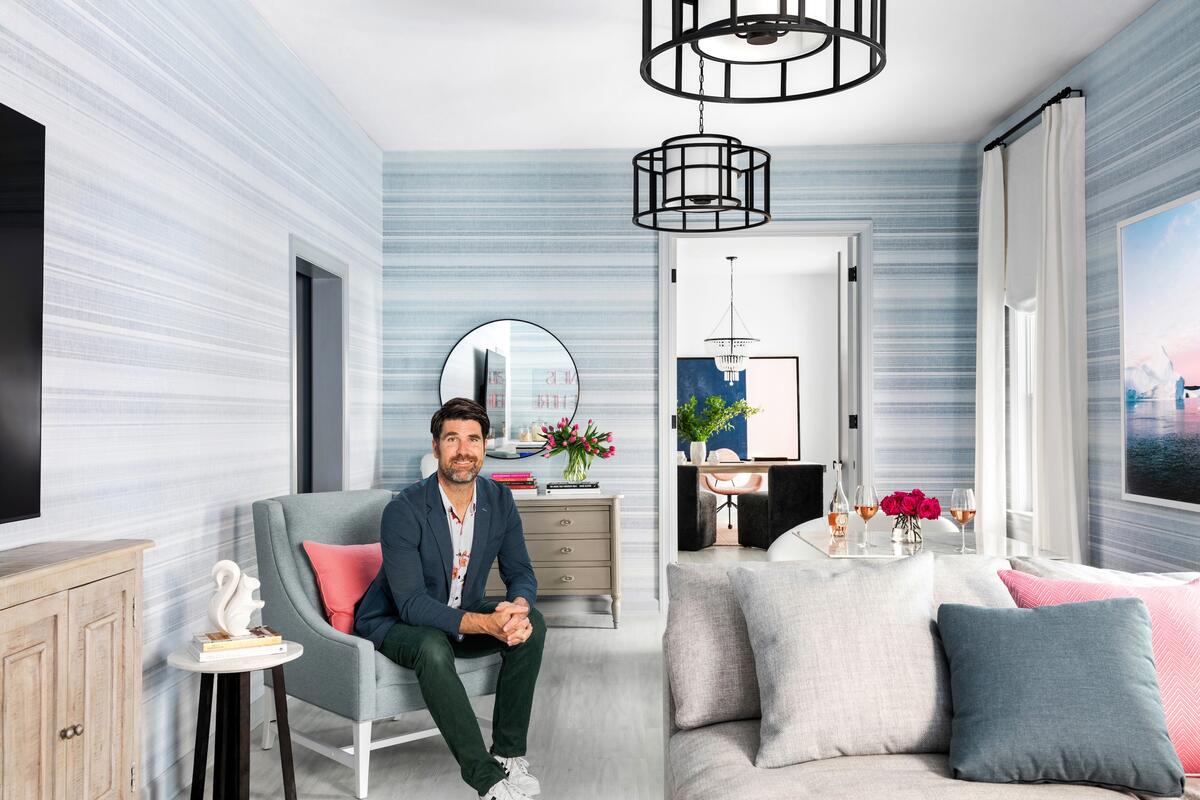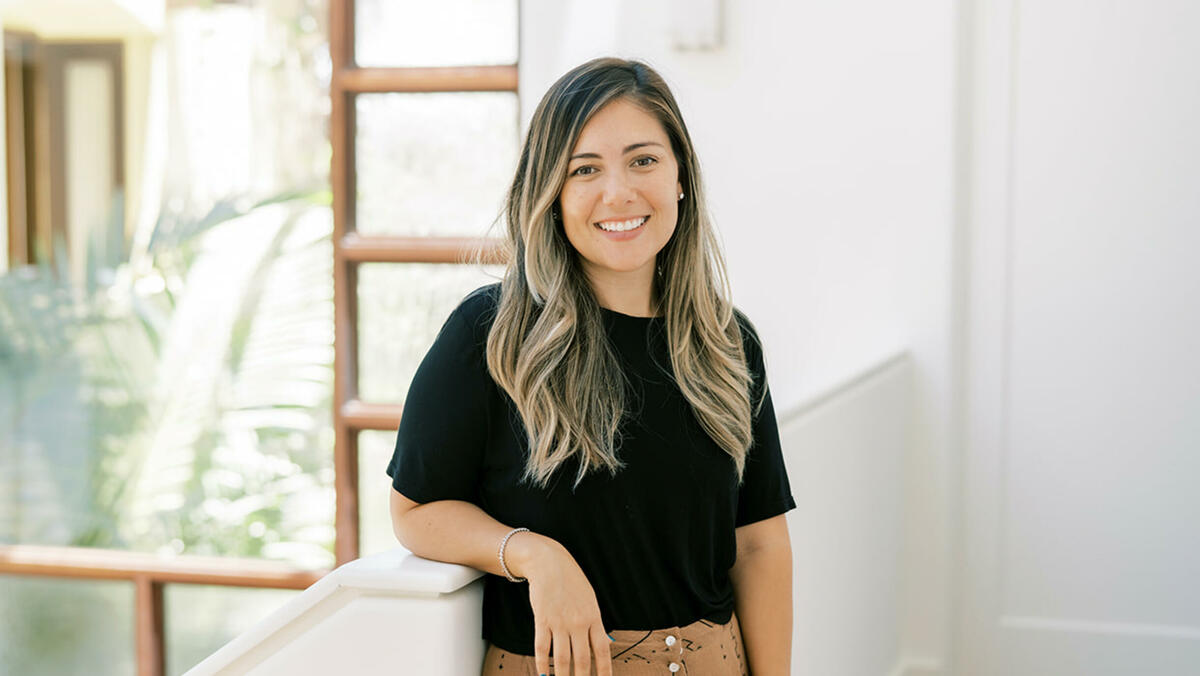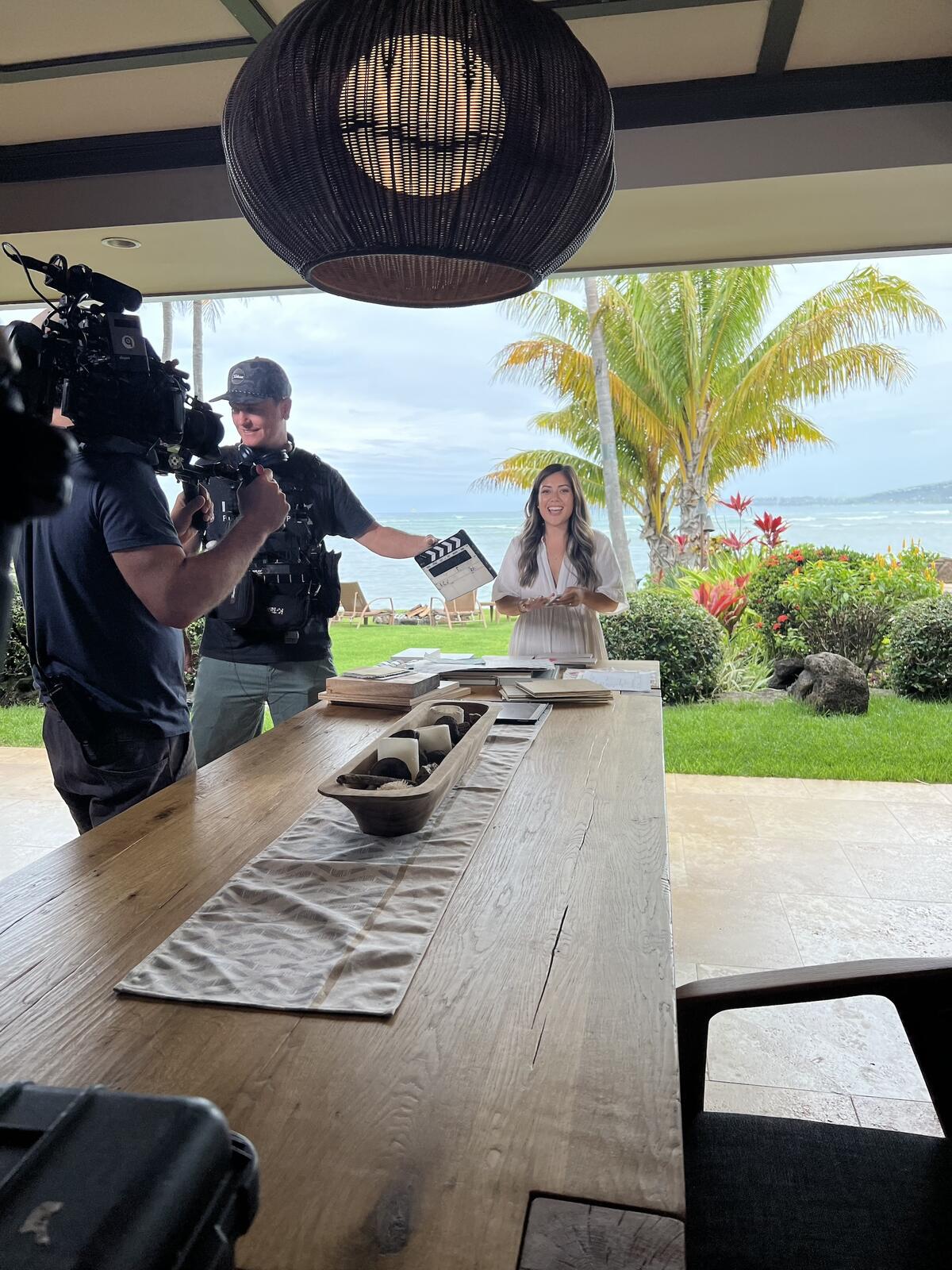Not everyone grows up knowing what interior design is—never mind its possibilities as a career path. Often, the first window aspiring creatives have on the industry is a television screen, where, on broadcast and cable channels alike, frenzied teams of extreme personality types compete against each other and an impossible deadline to hastily revamp a home—that’s usually ultimately styled more like a cartoonish movie set and sometimes hidden behind a great big bus. This gamified approach does little to accurately reflect the time, taste and craftsmanship that go into more refined design at any budget level, and it has the added detriment of leaving clients with unrealistic expectations about basically everything.
In many ways, Chip and Joanna Gaines followed in the footsteps of the reality TV giants who came before them, building an enormous following around their Fixer Upper program on HGTV. Then, they left, parlaying their popularity into not just multiple merchandising deals but their own cable network. Magnolia—the reimagining of Discovery’s DIY Network built around the couple’s mega-successful home-and-lifestyle brand—has been up and running for more than two years since its 2022 cable TV launch. And like their original show, the network has been a hit, consistently landing in the top 50 cable rankings for women 18 and over.
What, exactly, has garnered such a receptive audience? BOH set aside a weekend and binge-watched 20 hours on Max to get current on its content slate. For anyone else who might be Magnolia curious (but not have the hours to spare), here’s an unofficial primer on how it portrays the design world today.

The Mom and Dad of Farmhouse
She’s Type A, decisive, and has an amazing wardrobe of strategically ripped jeans. He’s the brawn behind the brains, a dependable goofball, and once described himself by exclaiming, “Dadgum, dude’s got a ’stache!” Married since 2003 (and the parents of five children who sometimes pop up on their programs), designer Joanna and contractor Chip Gaines gave their hometown of Waco, Texas, an identity to be proud of with Fixer Upper, which premiered on HGTV in 2013, ran for five seasons and made them a household name. With a combination of hard work, can-do attitudes and stockpiles of shiplap, salvaged barn doors and apron-front sinks, the pair put farmhouse chic on the map, single-handedly revived the economy of an entire section of Texas, and have since parlayed the popularity of their original show into Magnolia offshoots Fixer Upper: Welcome Home, Fixer Upper: The Castle, and Joanna’s Mini Reni, which spotlights small, no-demo interventions for maximum design impact (plus several tangential shows centered around her cooking and one on her sister’s plant shop).
Most recently, Fixer Upper: The Hotel found the Gaineses branching out from residential to hospitality design. The two-year-long renovation of Waco’s circa-1928, Moorish-influenced Grand Karem Shrine Temple involved compromises with the state’s historic preservation commission, Joanna experimenting with terrazzo flooring, and Chip buying Larry McMurtry’s enormous old bookstore just to stock the hotel library. Mixing a little how-to, a dash of local history and a hint of rom-com, the heteronormative chemistry between the power couple will have you breezing through seasons at a time even if your taste is not quite as Middle American.
“What you see on television is exactly what you get,” says Brian Patrick Flynn, the Atlanta-based designer whose eclectic decorating show Mind for Design is streaming on the network. “Totally down-to-earth, zero ego, completely unfazed. They just beam optimism everywhere they go.” Acknowledging that Chip has the reputation for being the life of the party, he adds: “One thing that people don’t know is that Joanna is remarkably funny.”
Unlike other networks, where executives hand down all the decisions and creatives bend to their spreadsheets and whims, the Gainses’ programming perspective is informed by the many seasons they themselves have spent in the spotlight—and influences which programs they decide to greenlight. “Because Chip and Jo were talent first, they have a special vantage point. They understand what it’s like to be on the other side of the camera. They’re not just business suits—they’re interested in authenticity,” says designer Shaolin Low, star of the pilot Home in Hawaii. (She’s waiting to hear if the show gets picked up for a full season—“fingers crossed!”)
Family Matters
While there can be only one Jo and Chip, the network knows a winning formula when it sees the ratings, and has made plenty of room in its schedule for appealing copycats from across the country. In fact, there are so many creative, collaborative, “she’s bohemian-artsy, he’s handyman-burly” couples that it will make you believe in love again—or at least in the boilerplate plot of Hallmark movies that the combination recalls. Witness the aspiring design duos behind A Home Away, in Columbus, Ohio; Making Modern With Brooke and Brice of Nashville; and even Design Down Under, featuring a husband-and-wife team in Melbourne. Based in South Carolina, Happy to Be Home With the Benkos revolves around not just designer Gray Benko and her craftsman husband, Mike, but also her charmingly cantankerous contractor dad, who goes by the moniker Grumpy.
“I’m absolutely in love with that series because she uses color,” says Flynn, a hue aficionado himself. “She does these incredibly complex spaces that are positively not for everyone—in the best possible way—because she’s doing something different.” While every episode ends with a glow-up, Flynn thinks that’s beside the point. “I don’t consider the design series on Magnolia to necessarily be makeover shows,” he continues. “The emphasis is just as much on the relationships involved and interpersonal dynamics, which is much different than simply wanting to see a transformation.”
“My dad, to me, is the star of my show,” says Low of her own father, Albert, who is shown calmly breaking some bad news about mismatched ceiling beams mid-renovation, then coming up with an innovative solution. “He’s my go-to general contractor and a huge mentor. I’m kind of all over the place, doing all the things, but he’s very much my rock and keeps me grounded. It’s so nice to share this experience with him.” (Her husband, Leaf Castillo, is a craftsman who also makes frequent cameos.)
The familial bonds on-screen reflect the values the network wants to represent, although there’s been at least one bump in the road: Home Work, following the projects of Andy and Candis Meredith of Utah, was pulled from the schedule two days after it premiered in January 2022 when allegations of shoddy workmanship, ballooning budgets and missed deadlines surfaced—though, in a fluke of timing, the show still won a Daytime Emmy after the fact.

Cabin Fever and DIY Divas
Second to Chip and Jo, Magnolia’s other anchor is Maine Cabin Masters, which began on DIY in 2017, has 10 seasons under its toolbelt and boasts an audience peak of more than 400,000 viewers. Heavy on the reno, it follows salt-of-the-earth contractor Chase Morrill, his designer sister Ashley and her carpenter husband Ryan Eldridge as they apply their budget-conscious, no-guff approach to gutting and restoring ramshackle cabins damaged by flooding, infestations, and every other element the state’s fickle weather can whip up. The final reveals may not be nearly as chic as those on other shows, but there’s something primal about a crew of grizzly-bearded dudes in buffalo plaid going ham on rotted floorboards while trading wicked smaht barbs. If that doesn’t sate your craving for cabins, consider the Nashville-set Williams Family Cabin and, for glampers, the cross-country Cabin Chronicles—chill, 10-minute episodes that inspire Instagram testimonials like: “This show is a healing tonic.”
True to its DIY roots, Magnolia also spotlights several creatives who have built small businesses (and often big social media followings) with their hands-on crafts and quickie makeovers. On Motel Rescue, Lindsey Kurowski does just that for rundown hotels; Fariha Nasir solves Problem Spaces like turrets and attic bedrooms. Jared Capp and his teen stepdaughter Alex repurpose odd structures such as grain silos and shipping containers in Building Outside the Lines, while influencer Jenni Yolo completes weekend refreshes in Makeover by Monday. Design purists may cringe when one maker cheerfully covers up the better part of an original stone fireplace with grout while touting “the German schmear technique” and another takes a trio of perfectly cute wooden nesting tables and proceeds to deface them with graphic stripes and polka dots straight out of the 1980s, but—as with the vehicles Brett Lewis transforms into tiny mobile homes on Van Go—your mileage may vary.
Refined Design
Magnolia is not all mandolin-plucked musical interludes and down-home do-it-yourselfers: Boldface interior design pros pop up across the programming—including the occasional coastal elite. With her series The Established Home, Grand Rapids, Michigan–based Jean Stoffer keeps it classic, designing midcentury lakefront escapes and red-brick Georgian residences. Anthology shows like Point of View and the micro series Well Designed profile talents such as Sean Anderson, Cliff Fong, Brownstone Boys Jordan Slocum and Barry Bordelon, Kirsten Blazek of A1000xBetter, Light and Dwell’s Molly Kidd and Aymee Kuhlman, Erika Chou and Melissa Lee of Bespoke Only, and Erick Garcia of Maison Trouvaille. Sarah Sherman Samuel, who established her design business in Los Angeles before returning to her home state of Michigan, marries urbane sophistication with Midwestern grit in her series Inspired Interiors.
“Sarah Sherman Samuel is one of the best interior designers in the world, and in a lot of her episodes, there isn’t even much of a reveal. It’s more about artfully documenting the process,” says Flynn. Comparing Magnolia’s programs to the kinds of countdown competitions on other networks where teams score points on a checklist and segments are edited to end on fabricated Amazing Race–like cliffhangers, he adds: “It’s not just a flash-in-the-frying-pan manner that’s trying to get something up quick and easy. It’s visual storytelling that beautifully captures the craftsmanship of the entire team.”
Low, who regards her show as a gateway to the culture and “magic” of Hawaii, agrees. “I’m so happy to have had the opportunity to highlight a local woodworker friend who builds furniture from invasive albizia trees, and then feature a nonprofit that replants native species as part of a traditional Hawaiian ceremony,” she says.
Just Vibes
At first glance, Magnolia’s slate of shows may appear uniformly straight and white, but just as the brand survived the Home Work debacle early in its first year, it has also quietly countered criticism for being anti-LGBTQ and lacking in BIPOC by continuously diversifying its offerings. Joy Moyler and Mikel Welch are among the featured experts who explain various historical decor styles in the low-key educational Design Defined series. The most recent episode of Flynn’s Mind for Design centers on the conversion of his Atlanta basement into a modern apartment for his husband’s mother. Click on the calming shorts of Diary of an Old Home as pleasant, second-screen background viewing and you just might happen across a biracial couple in Portland, Oregon, casually discussing the city’s history of redlining in relation to the renovation of their 1924 prairie-style clinker-brick Craftsman. The network lets its content speak for itself without virtue signaling.

“There’s no drama, and it’s the best thing ever, because this is escapism,” says Flynn. “I don’t necessarily want to see somebody quit because the job is too hard, or people yelling at each other because somebody missed a deadline. You’re just following people who are happy to do what they do for a living.” That’s what characterizes the Magnolia brand: Contrary to Survivor’s famous catchphrase, they are there to make friends. “You can leave the channel on all day long and your kids, your parents, your grandparents can watch it without ever having to worry about being put in a bad mood. If anything, it’s very uplifting.”
For Low, the network’s commitment to telling real design stories has been a meaningful part of her on-camera experience. “Reality TV has gotten this reputation for being reality-ish, right? Sort of scripted, sort of planned,” she says. “Magnolia takes more of a documentary approach, observing someone’s real life like a fly on the wall with the confidence that that’s enough to carry the whole show. That’s why the network is special.”
Many of Magnolia’s series consist of bite-size, first-person snapshots of owners sharing the stories behind their homes, like Diary of an Old Home or Beach Cottage Chronicles and its cabin counterpart. Most are happy, but as in real life, bittersweetness can seep in: the grown son who lost his father to illness before the renovation in Florida was finished; the young woman whose miscarriage, followed by a layoff in tech, was the motivation behind her up and moving to Southern California. After all, what’s a pretty house, beachfront or otherwise, without any heart inside it?
From hard-core reconstructions to genteel old homes to quirky how-tos, there’s something for almost everyone on Magnolia—OK, admittedly, Park Avenue penthouses and TriBeCa lofts are nowhere to be found on the lineup, but globe-trotting urbanites were never the target demo. Jo, Chip and the network’s goal is to get the whole family to gather around. To that end, there’s an entire menu of cooking shows (Flynn raves about the Emmy-nominated Growing Floret, and both he and Low are “obsessed” with The Lost Kitchen) and some gardening too. Expanding beyond lifestyle altogether and into the entertainment realm seems to be on deck next: Future programming for 2024 includes a frontier-living experiment, a roller-dancing competition—and a game show that pits humans against hamsters.
“If anyone can take an idea about hamsters and make it entertaining, beautiful and actually fun to watch, it’s Chip and Joanna,” says Flynn.




























